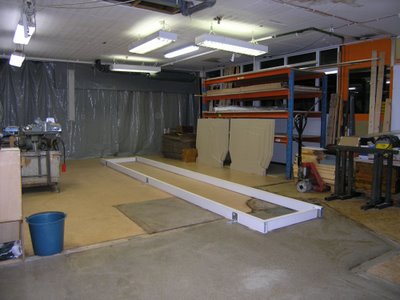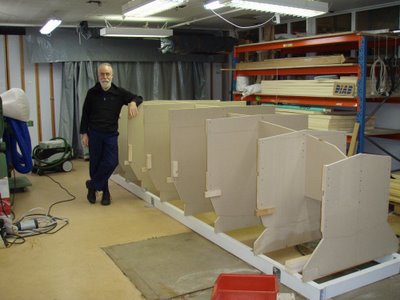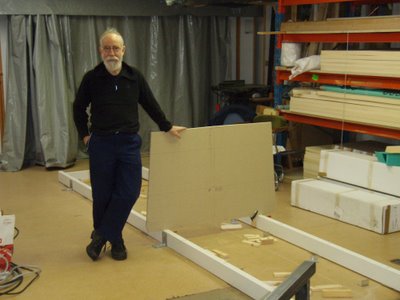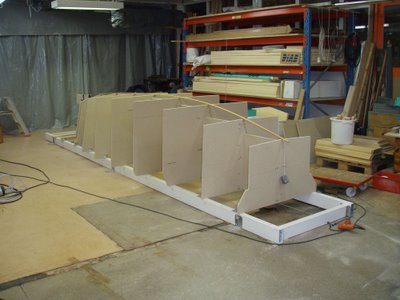Two of the tourist’s means of conveyance are the recreational vehicle and the bicycle. The RV gives its owner comfort and speed. It has beds, kitchen and a shower. If it starts to rain, there are windshield wipers. The cyclist uses a simple and environmentally friendly form of transport. He sleeps in a tent and eats outside, but cycling is sweaty work and during heavy rains he gets wet. Furthermore, compared to the RV he does not get far in a day – despite his feeling of speed. But, cyclists do not get fat, nor do they get bored- their bliss comes from within. Bike trips are known to be healthy and mentally enriching, therefore even people who can afford a RV go cycling. At sea it’s different. Although people paddle kayaks and sail small boats along coasts, normal people only cross oceans in big boats with beds, a kitchen and shower. If a small boat sailor leaves the coast he is deemed mad. If he successfully returns to land after having crossed an ocean, he is hailed as a hero. But what he has done is not madness or heroism, because the oceans are waste regions of wilderness, stunningly beautifully in their ever-changing magnificence. To roam them in a small, safe, environmentally friendly boat, propelled by wind and muscle-power is healthy and mentally enriching.
I must stress the importance of safety because the sea is ruthless in its fury and the small boat, far out to sea, has no place to hide. Alone, without help, it must be able to survive storms of the worst kind. Some things are inherently dangerous. Fires, electricity and cars can hurt you, but we have not done away with them, we have made them safer and developed better ways to handle them. Ocean-going production boats are big not because bigness makes them safe, but because there is more money in big than in small boats, and much money spent gives the owners status.
* * *
After decades of studying, designing, building and sailing small, ocean-going boats I have evolved a safe, functional design. Here is a brief description of Yrvind ½, my next boat in that series, embarrassingly named after myself.
Her basic dimensions are length 4.8 meter, or 15 feet 9 inches, beam 1.3 meter or 4 feet 4 inches, draft 0.22 meter or 9 inches. Her intended displacement fully loaded will hopefully be 800 kilos or 1760 pounds.
In designing her I have had invaluable help from Matt Layden. I hope to sail her down the Atlantic, east in the southern ocean to visit a friend Per in Melbourne.
Anyone who walks along a beach knows that among the debris washed ashore there are bottles, boxes, bulbs and other small, fragile artifacts which have survived storms far out to sea and the merciless pounding on the beach, while bigger things have been broken up. The fundamental principal behind this interesting fact is called the square-cube law. It was first demonstrated 1638 by Galileo Galilee. It states that as a thing gets larger, its strength increases by the square of the scale, while its stresses increase by the cube of the scale. This law applies to the global structure of an object. Unfortunately local stresses are totally different, and they are the small boat’s Achilles’ heel. There are a lot of half-submerged containers and other jetsam out there which will not bother a big ship but which can puncture a small boat’s hull.
My solution is to make Yrvind extremely tough, and by dividing her into waterproof compartments and building her of so much buoyant material so that she cannot sink.
* * *
The impact on a free-floating object is proportional to its weight, so lightness lessens the force. It rolls with the punches. To illustrate this, make an experiment. Hold a walnut in your hand and hit it with a hammer. Nothing happens because the nut moves away. Put it on a rock and hit it, and it will crack, because it cannot escape and has to absorb the whole impact.
A different way for an object to lessen the damage of an impact is to deform and spread it out over a longer time. Do another experiment. Put a piece of rubber on a rock and hit it with a hammer. The rubber deforms, but does not crack.
Yrvind ½ is designed with these two interesting facts in mind. First, she is light enough to move away when hit and her lightness also ensures that she creates less impact when she runs into something. Second, since the 1980’s I have built my boats using an atypically thick sandwich core, in combination with a very strong inner skin. When hit with a blow that would be fatal to a production boat, the outer skin breaks and the foam gets crushed. This absorbs the collision energy and distributes the impact over a large area. The already strong inner skin is less strained, and the boat is not holed. My small boats built along these principles are for all practical purposes indestructible. Any damage is cosmetic and can easily be touched up in the next port.
The interior climate of a small boat is often neglected. On short coastal trips this may be an acceptable compromise. But when I spend months offshore, I hate to have to fight condensation, salt and mildew.
On a fifteen-footer which I sailed, together with a young lady, from France to Newfoundland, I used two-inch thick Divinycell foam core in a sandwich construction. To get good and flexible skin adhesion I used a specially formulated NM-epoxy. The foam gave a warm interior surface. As water always condenses on the coldest surface, the boat’s uninsulated windows were cold spots. I deliberately kept them that way because it turned them into condensation plates which effectively dried the cabin air. Handholds at their lower edges doubled as water collectors.
Besides strength and insulation, the Divinycell gave so much flotation that the boat was unsinkable. She let us sleep through storms among the icebergs, dry, warm and without worry.
* * *
Yrvind ½ has two bulkheads. In bad weather they are closed, dividing her into three watertight compartments. The two compartments at either end serve as anterooms, trapping any rain and spray which might come in through the hatches, which in fine weather can stay open day and night.
Many times I have suffered from a stiflingly hot saloon. The worst times have been when south-bound, leaving the Atlantic north-east trades to cross the equator, where one meets the south-east trades head on. At that point the wind is southerly and one has to be close-hauled not to be swept around the corner of Brazil by the equatorial current. Banging into the big waves causes spray to fly all over the boat. On previous voyages, I have had to sail with the hatches closed, causing the cabin temperature to reach nearly a hundred degrees during the hottest time of the day. I think that’s too much, especially for a Swede! Now with this new arrangement I hope to be able to have a fresh breeze flowing through the cabin at all times. At other times, when one is driving the boat hard in high winds with breaking waves, the hatches have to be closed because of risks of knock-downs and capsizes. Then, fresh air will enter Yrvind through ventilators equipped with ample Dorade-boxes. These normally do a great job separating air and water, but when conditions are really bad, they do not always function as intended. On production boats any water not trapped by the Dorade-boxes will enter the boat as a shower from the roof. My solution is to duct the air to below the waterline and across the bottom to the opposite side in the anteroom. There the excess water will harmlessly spill out on the floor. Perhaps the greatest advantage with this arrangement is that it prevents water from flowing into the boat when it is upside-down, as the opening in the ducts will then be above the waterline. This arrangement ensures that the middle compartment, with my bed, books and stores, will always stay dry.
***
Some people say she is to small for comfort. They are right, but she is snug enough to invigorate her crew during any weather. Too much comfort makes a person lazy, fat and bored. Active small boat sailing on the other hand stimulates body and soal.
***
There should be a place for everything and everything should be so well secured in its place that it stays there even when the boat is upside-down. When there is a place for everything it is easy to keep order even through exciting times. I consider myself to be one of those things that should be kept secured. In Yrvind½ I will use a safety belt to prevent myself from being thrown around. In addition to that I will have a pilot-type leather cap on my head. Attached to the cap will be another small safety belt, with which I can strap down my head to prevent whiplash injury. I keep in mind that I can not bring new things aboard before first having created a secure place for them. That includes pretty girls.
Even though I have endeavored to make my boat safe, an accident might still happen. I realize that I am not one hundred per cent safe on the ocean waves. But on land I am less safe. By sailing my boat in deep water I am out of reach from the dangers which makes life ashore so hazardous. Contrary to the common opinion, I increase my chances for a long healthy life by going to sea.
* * *
I like to stay at sea for long periods of time. Therefore, Yrvind is designed with a large cargo carrying capacity. To keep the radius of gyration small the boat’s endships have to be kept light. I will carry most of my stores low down in the middle of the boat in the dry saloon, under the bunk, and in the side lockers. There I have 450 liters or 16 cu.ft of storage volume. Yrvind½ is designed to carry a maximum safe payload of 400 kilos or 880 pounds. My food requirements are 0.7 kilos or one and a half pounds a day. This makes it possible for me to stay at sea for a long time. For drinking water I plan to use rainwater, of which there is abundance.
* * *
It is true that a bigger boat can sail faster to windward and that weatherliness is very important, especially in gales close to a lee shore. In general, a boat’s stability increases with the fourth power of the scale. Accordingly bigger boats are less harmed by strong contrary winds, but stability can be gained by more than just size. In Yrvind ½, I can move heavy things to windward. Also her ten feet short mast does not heel her much.
Another factor which affects a small boat’s weatherliness is the thickness of the boundary layer between wind and water. This increases with the wind speed so much that during high winds a small boat lives in it and get some protection from the storm. Much also depends on common sense. During my nearly fifty years with small boats I have not even once come to harm due to problems with weatherliness. And I have been exposed; in March 1976 I sailed from Nantucket to the Acores, in June 1980, in a nineteen-footer, I rounded Cape Horn from east to west against the prevailing winds and currents. In 1989, I sailed a fifteen-footer from Ireland to Newfoundland, mainly to windward.
During that passage me and my girlfriend faced a series of westerly gales lasting for eleven days. When, on the twelfth day, the sky had cleared enough for me to use my sextant, I found that we were farther west than when the gales had started. Friends of ours in a heavy thirty- five footer never made it. Later we heard that they were telling people that they had to give up because the weather had been too stormy that year.
The reason we succeeded where our friends in their big boat failed was that our boat had a short mast rigged with a small trysail. That gave us a good lift-to-drag ratio. With our bow centerboard lowered and very little sail area, we took the waves nearly head-on and slowly worked our way to windward in comfort.
Weatherliness, especially when sailing slowly against strong winds and breaking waves, is also very much a question of having a large lateral area. Matt Layden’s chine runner configuration, incorporated into Yrvind ½, uses the boat’s vertical hull sides as lateral area. These can therefore be very much bigger than if she was an ordinary keel-boat.
* * *
In 1974, I tried to round Cape Horn from east to west in a 20-footer I had built in my Mothers basement. She had earlier successfully dealt with storms near Iceland and west of Ireland, giving me a lot of confidence in her, but in the Southern Ocean, near Cape Horn, she was capsized, and a week later pitch-poled too. I sailed her back to Sweden and built a 19-footer for another attempt which was successful.
Later, when I had returned to the South Atlantic and was cruising among the Falkland Islands, I discovered that when building her I had been so focused on Cape Horn’s deep, stormy waters that I had forgotten about the advantages of a shallow draft. The result was an unbalanced design. Although you would never catch a “Kelper,” (as the Falkland Islanders call themselves) admitting the islands are windswept, the fact is that there are no trees there, and during my four month stay, the wind speed reached one hundred knots on three occasions. As a consequence of not having a shallow draft, I had to suffer many times by anchoring in exposed places. That gave me a hard time communicating with the shore in my inflatable. A flat-bottomed boat that could have taken the ground would have made life so much easier.
It was when I lived in a little Japanese fishing village, learning how to use their yuloh which they call “ro” (and which, by the way, I think is far superior to the Chinese) that I realised that the strong flat bottom they use for their traditional boats would also give the cruising man many advantages. It can take the ground without getting damaged. It gives a lot of initial stability. It gives greater interior floor space, and of course, it gives very shallow draft.
Later, back in Sweden, when I was brooding over the topic of draft, I remembered I had gotten two letters from America, one from Dave Bolduc and one from Mickie another friend. Both of them contained drawings of Matt Layden’s 14-foot coastal cruiser Paradox. Once more I got out the drawings and looked at them. Paradox has a strong flat bottom and a draft of only nine inches. At first look one gets the impression that she cannot go to windward as it seems that she has no means of preventing leeway. A closer look reveals her chinerunners, small two-inch wide horizontal winglets sticking out from the chines for about a third of the boat’s length. But was that enough? Intrigued, I phoned Dave. He had sailed with Matt for a winter in the Bahamas and confirmed that they worked very well. He gave me Matt’s phone number. I called Matt and he told me that he could sail Paradox better to windward than Dave in his slightly bigger centerboard boat, and he invited me over to see for myself. In October 1997, I sailed Paradox for a month. In 2003 I returned, and again in 2006 and 2007. Each time I stayed for about a month, sailing and discussing boats with Matt. We continue to exchange ideas once a week over the phone, which is very enlightening, as Matt is always one step ahead of me. I am now convinced that the chinerunner concept, created by Matt in 1982, is the greatest innovation for small cruising boats in the last century. The reasons why very few people have realized its advantages are that Matt does not try make his voice heard above the din from the egos in our conservative, self-centered society to promote his idea, and that the principles behind it are complex and subtle, and have been subject to little research and experiment. After a decade studying Paradox, and talking to Matt I have come to understand that the boat’s leeway-resistance comes from a combination of three sources, the chinerunners, the lifting body shaped hull and the large rudder.
Unlike the ordinary cruising boat, Paradox has no heavy ballast keel making her stability obvious. Matt uses less obvious means, like her cruising load kept low and her flat bottom which, a bit like a multihull, moves a lot of buoyancy to lee at small angles of heel. At large angles of heel, Paradox’s righting moment comes from a good height-to-beam ratio and the buoyancy of her superstructure. This shape gives Paradox positive stability at up to 165 degrees of heel. Better than most conventional keel boats Matt uses a lug sail. My favorite rig is a wing-mast with a sprit rig and a trysail in strong winds. Both rigs use short masts and are good. Yrvind is a mongrel, based on Matt’s and my ideas. I am grateful to Matt, and would like to thank him here for taking time to engage himself in my problems.
* * *
Like this:
Like Loading...
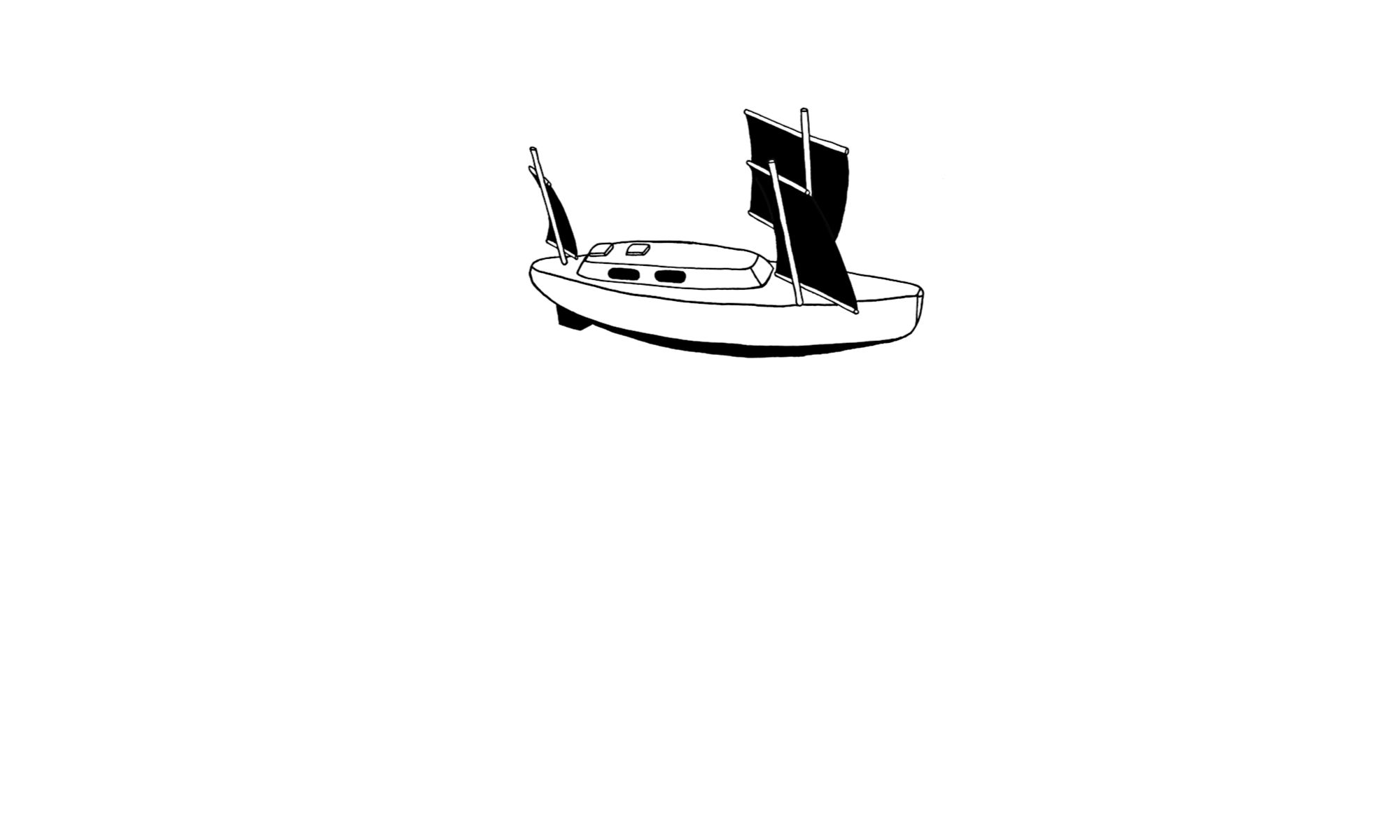
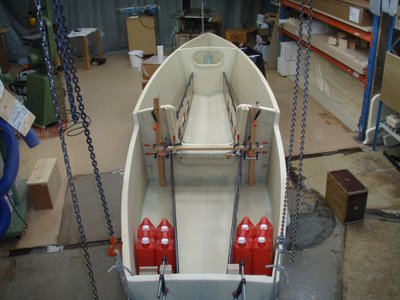
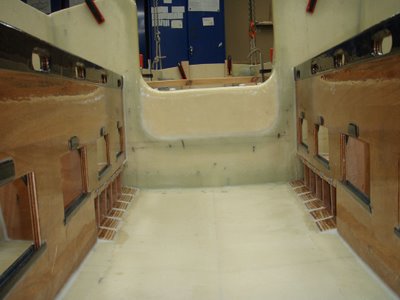
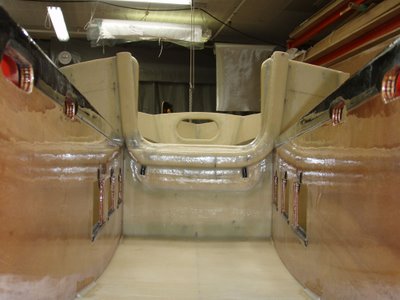
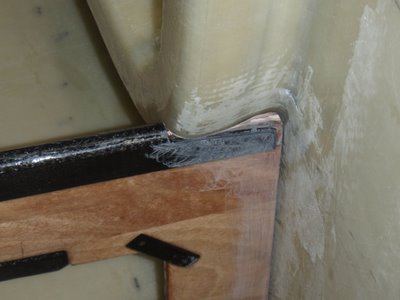
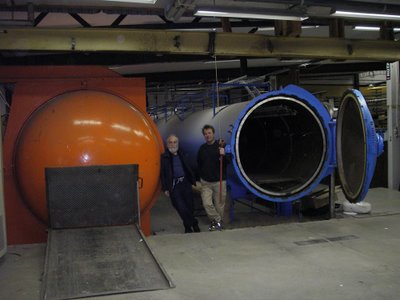
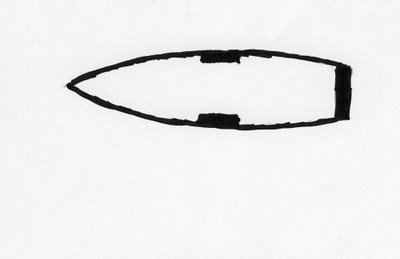
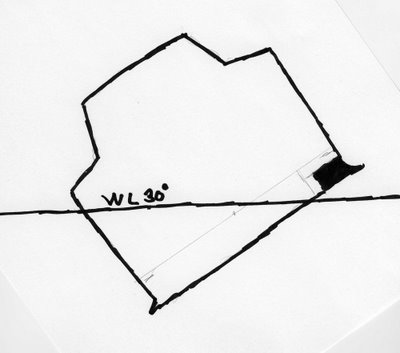
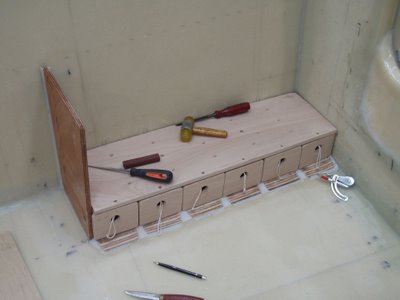
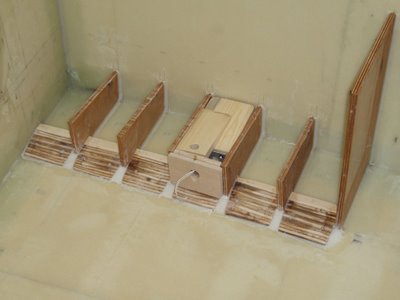
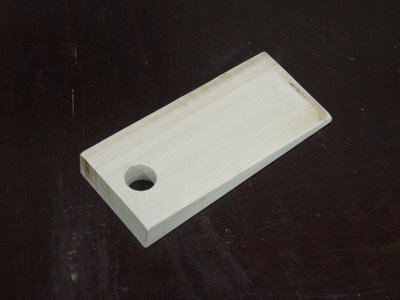
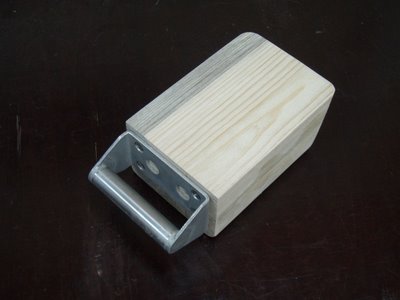
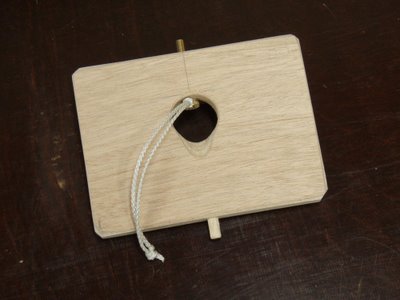
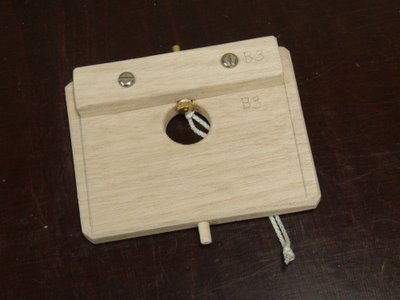
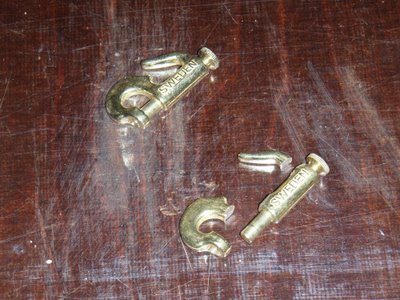
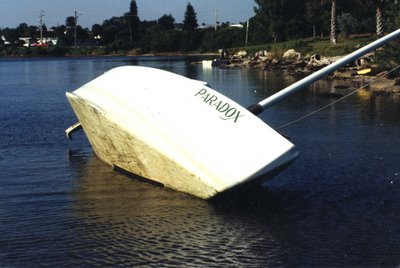
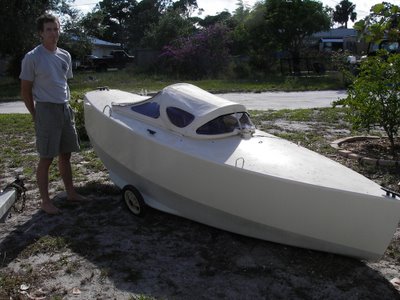
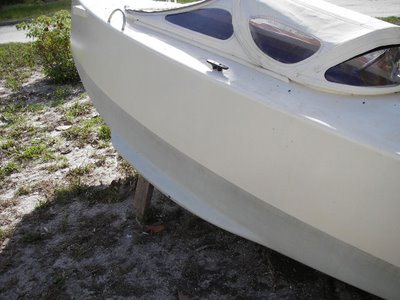
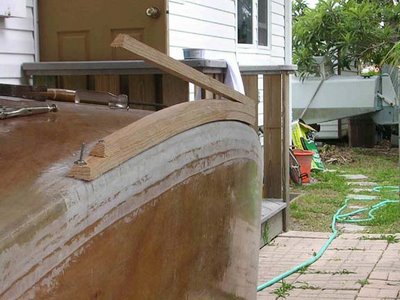
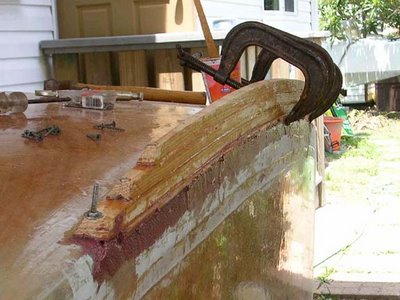
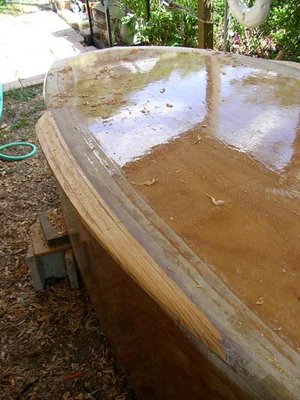
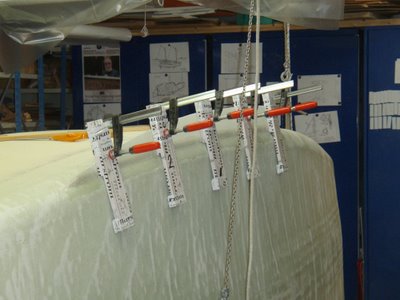
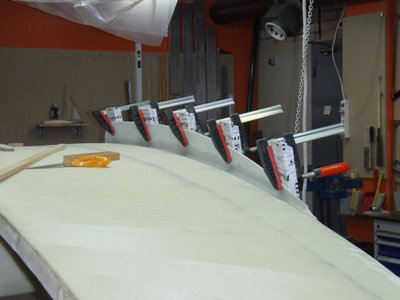
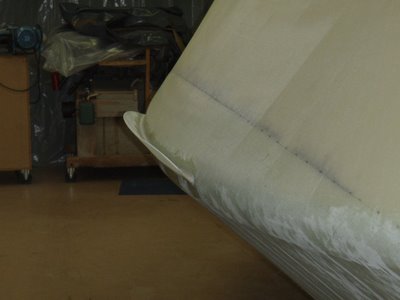
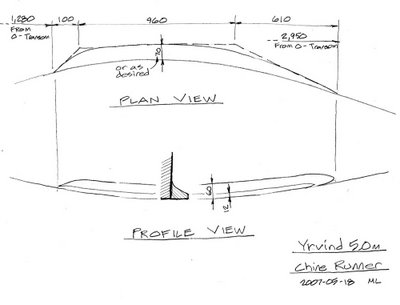
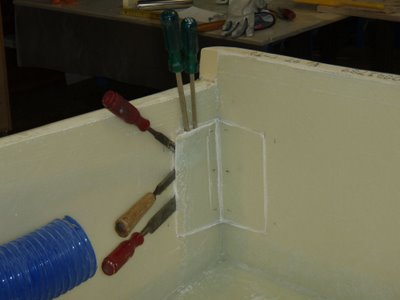
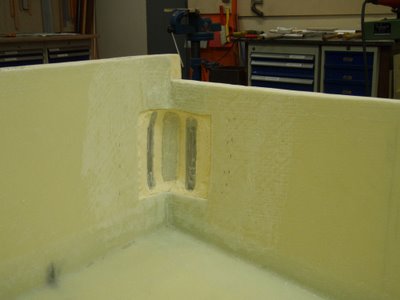
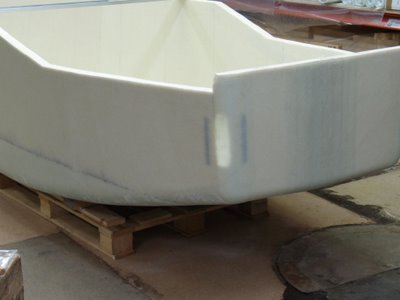
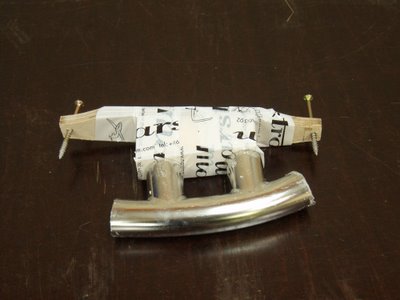
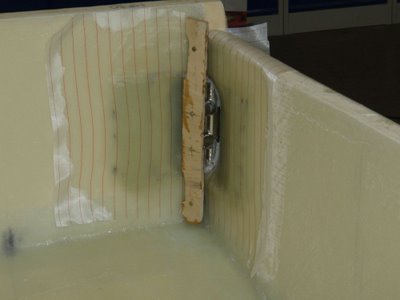
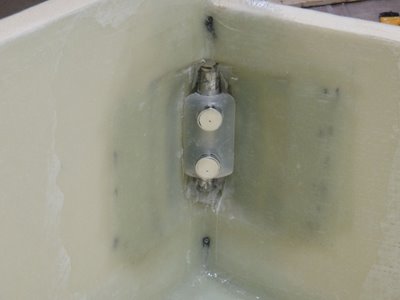
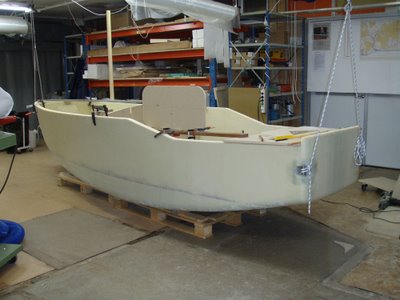
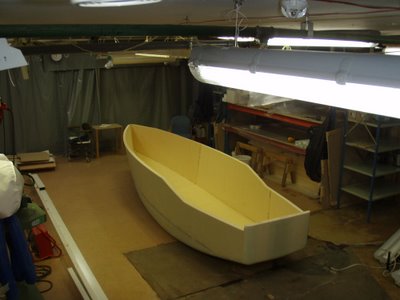
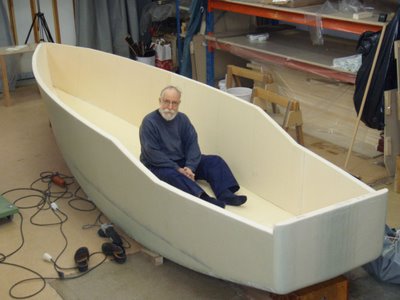
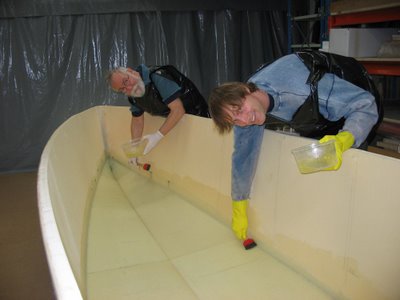
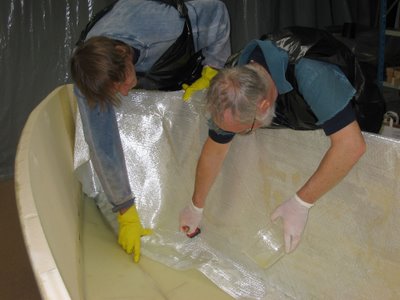
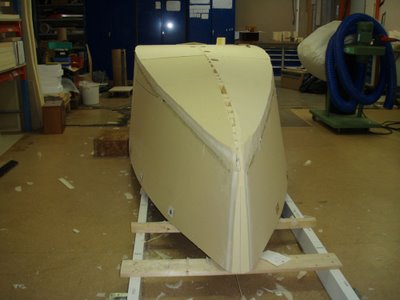
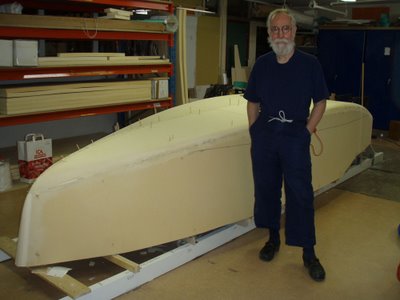
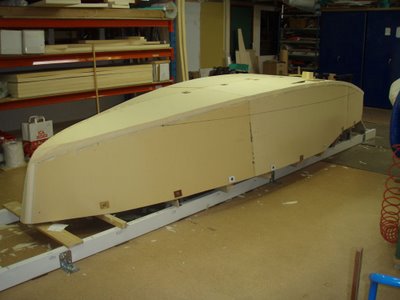
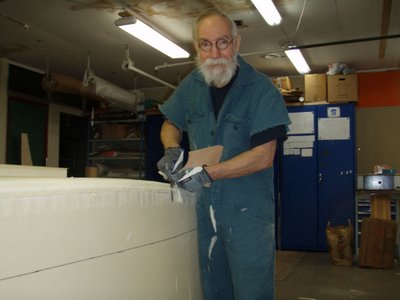
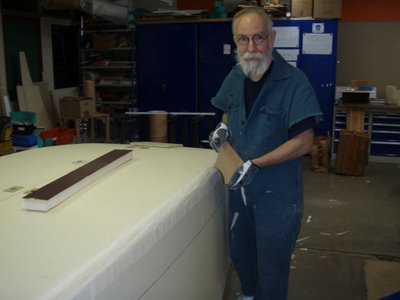
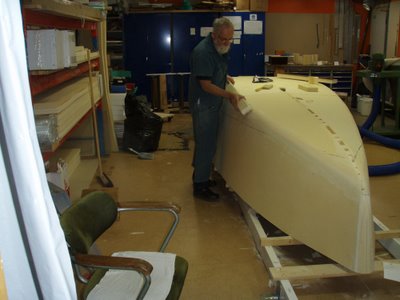
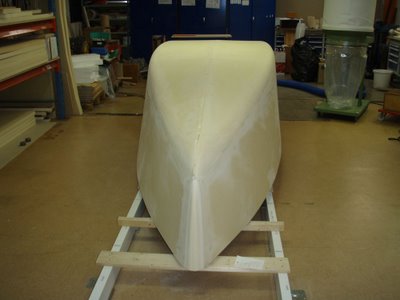
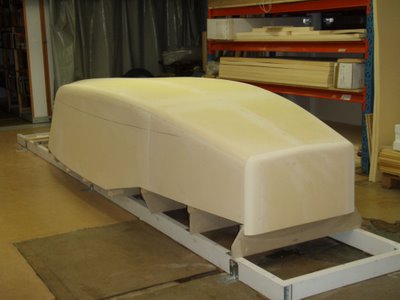
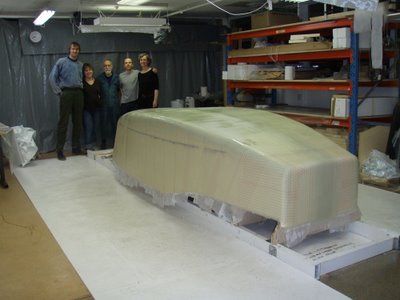
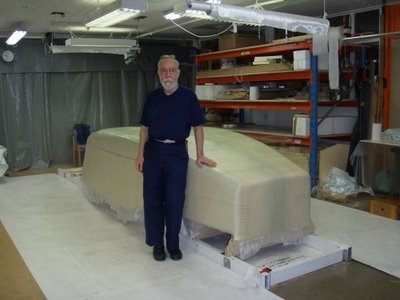
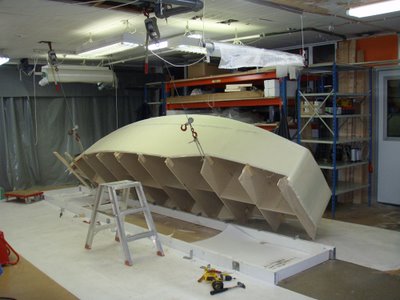
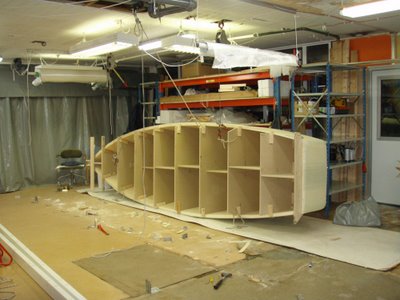
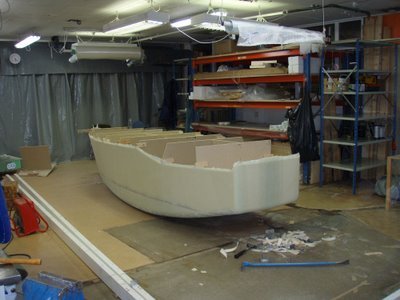
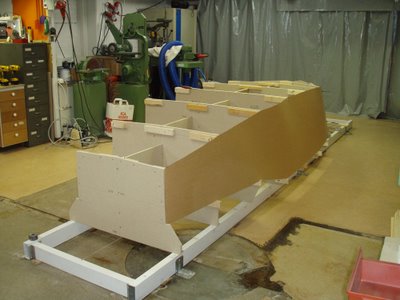
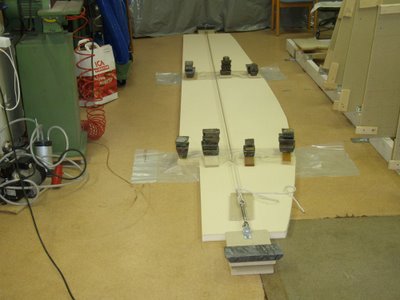
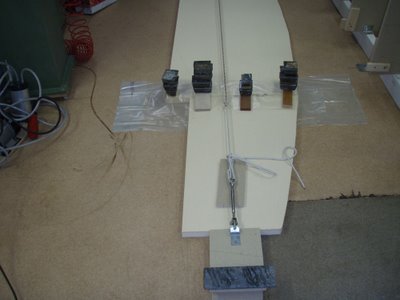
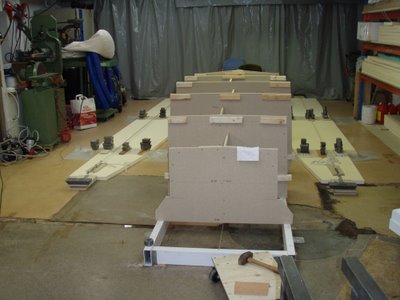
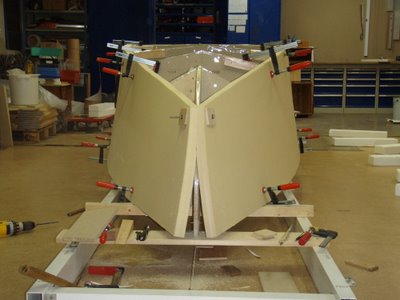
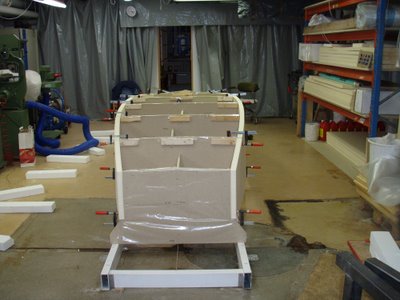
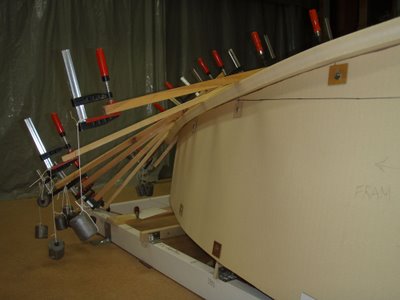
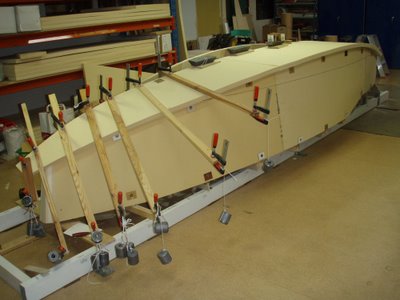
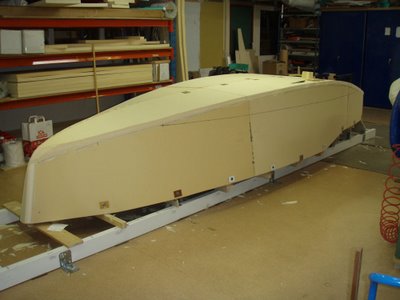
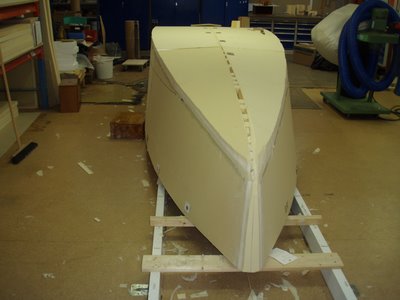
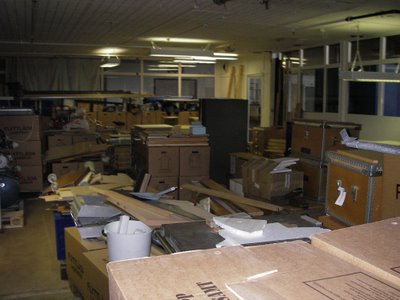 now
now